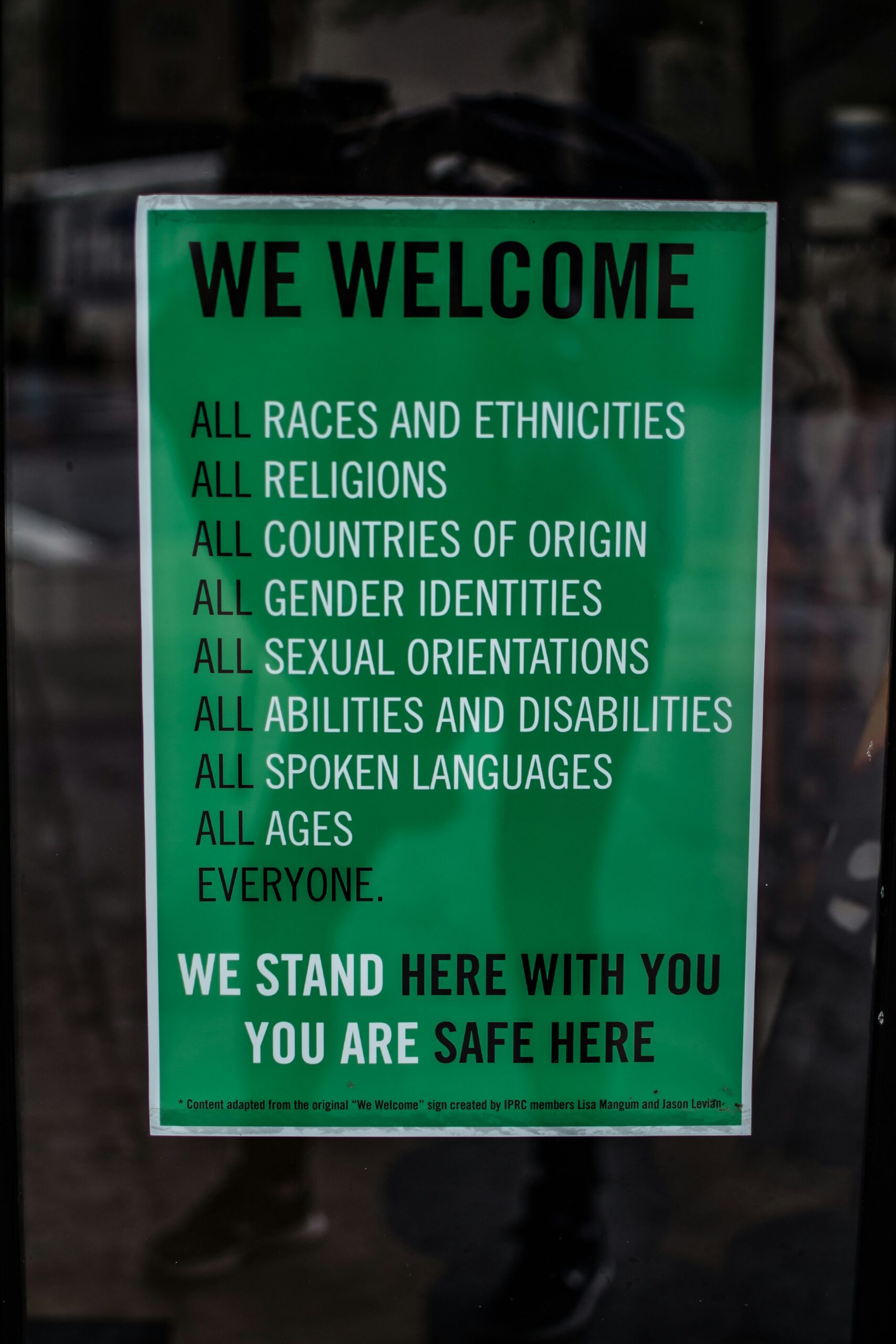How to measure Diversity, Equity & Inclusion (DEI)


Understanding Diversity, Equity, and Inclusion (DEI)
Diversity, equity, and inclusion (DEI) are fundamental components of a thriving workforce, representing a commitment to creating environments where every individual feels valued and empowered. Diversity refers to the variety of differences among people within an organization, encompassing race, ethnicity, gender, age, sexual orientation, disability, and other attributes that contribute to a distinct identity. It is critical to recognize that diversity is not only about demographics but also about the unique experiences and perspectives each individual brings to the table.
Equity involves ensuring fair treatment, access, opportunity, and advancement for all individuals while striving to identify and eliminate barriers that have historically led to unequal outcomes. This concept is essential in fostering an environment where every employee can thrive, as it emphasizes the importance of addressing systemic imbalances that may exist within organizational structures and practices. Inclusion, on the other hand, refers to the active effort of creating environments where diverse individuals feel welcomed, respected, and valued. An inclusive culture encourages collaboration, innovation, and the commitment to shared goals, enhancing overall employee satisfaction and engagement.
The significance of DEI initiatives extends beyond the moral imperative; it profoundly impacts organizational culture, employee satisfaction, and business success. Organizations that prioritize DEI often experience enhanced creativity and innovation, owing to the diverse viewpoints and experiences of their workforce. Furthermore, a culture that promotes equity and inclusion can lead to higher employee morale, lower turnover rates, and improved productivity. As businesses increasingly recognize the importance of DEI, measuring the efficacy of these initiatives becomes crucial to achieving sustainable growth and fostering a positive workplace culture.
The Importance of DEI Metrics
Measuring diversity, equity, and inclusion (DEI) is fundamental for organizations seeking to build a more equitable workforce. DEI metrics serve as essential tools that enable organizations to identify existing gaps within their workforce and inform strategies for improvement. By establishing clear benchmarks and metrics, organizations can accurately assess their current diversity levels and pinpoint areas that require attention or enhancement. This proactive approach to measuring DEI is critical in ensuring that all employees, regardless of their backgrounds, feel valued and included within the work environment.
Tracking progress over time is another significant advantage of implementing DEI metrics. Organizations can systematically monitor changes in workforce demographics, employee satisfaction, and retention rates among different groups. By regularly evaluating these metrics, companies can discern trends over time, compare them against industry standards, and measure the effectiveness of their DEI initiatives. This process not only supports accountability but also reinforces the commitment to creating a more inclusive workplace culture.
Furthermore, DEI metrics play a vital role in guiding decision-making processes. When organizations gather and analyze data related to diversity and inclusion, leaders are better equipped to make informed decisions on hiring practices, employee development programs, and retention strategies. This data-driven approach allows for the allocation of resources to areas that will have the most significant impact on enhancing workplace equity and inclusion. Ultimately, embracing DEI metrics supports organizations in cultivating a more diverse workforce, fostering innovation, and driving overall organizational success.
In conclusion, the importance of DEI metrics cannot be overstated. They are indispensable for identifying gaps, tracking progress, and informing decision-making processes that enhance diversity, equity, and inclusion in the workforce. Organizations that prioritize the measurement of DEI stand to gain a significant competitive advantage in today’s diverse business landscape.
Key Metrics for Evaluating Diversity
When assessing the effectiveness of diversity, equity, and inclusion (DEI) initiatives within an organization, it is essential to focus on specific metrics that accurately reflect the demographic composition of the workforce. Tracking diversity across various dimensions, such as gender, race, ethnicity, and other characteristics, provides insights into where an organization stands concerning its inclusivity goals.
One of the primary metrics is the representation of different demographic groups within the workforce. Organizations should regularly collect and analyze data on the gender and racial composition of their employees. This can be done through employee demographic surveys and should be complemented by workforce analytics tools to identify trends over time. By determining the percentage of employees from underrepresented groups in various levels of the organization, businesses can better understand their progress and set realistic benchmarks for improvement.
Another important metric is the hiring and promotion rates of diverse candidates. Organizations should analyze data on the recruitment process to examine how many candidates from different demographics are being interviewed and offered positions. Furthermore, tracking promotion rates can reveal whether employees from diverse backgrounds are receiving equitable opportunities for advancement.
Retention rates are also a critical measure of diversity success. Organizations should monitor whether diverse employees are staying with the company long-term compared to their peers. High turnover rates among specific demographic groups may indicate underlying issues within the company culture that require attention.
Lastly, employee engagement and satisfaction surveys can serve as valuable tools to assess how diverse employees perceive their workplace environment. Regularly gathering qualitative feedback can help organizations identify areas requiring improvement and ensure that their DEI policies are effective. By leveraging these key metrics, organizations can gain a more comprehensive understanding of their diversity landscape and make informed decisions for long-term success.
Assessing Equity Through Pay and Career Advancement Metrics
In the quest for a more equitable workforce, organizations must prioritize the evaluation of pay equity and career advancement metrics. These metrics act as critical indicators that reveal disparities within compensation structures and promotional pathways. By analyzing these factors, companies can identify areas needing improvement and implement strategies designed to mitigate inequities.
Firstly, assessing salary equity involves a comprehensive analysis of compensation across various demographic groups. Organizations should regularly conduct pay audits to compare salaries among employees with similar roles, responsibilities, and levels of experience. Such audits can highlight potential discrepancies in pay that may arise from unconscious biases or systemic inequalities. By integrating tools that track compensation data in relation to gender, ethnicity, and other pertinent factors, businesses can ensure that all employees are compensated fairly for their work.
Secondly, the evaluation of career advancement metrics is equally important. Organizations can assess promotion rates among different demographic groups to understand whether equal opportunities exist for career progression. Tracking metrics such as the ratio of promotions granted to employees from underrepresented groups can reveal whether systemic barriers hinder their advancement. This analysis not only highlights equity gaps but also informs the development of targeted initiatives aimed at supporting diverse talent within the organization.
Additionally, offering professional development opportunities is crucial for fostering an inclusive workplace culture. Companies should monitor the participation rates of diverse employees in leadership training programs or mentorship initiatives. Ensuring that all employees have access to resources that facilitate career growth can significantly improve overall equity in advancement.
In conclusion, by employing robust metrics for assessing pay and career advancement, organizations can take substantial steps toward achieving equity in the workforce. This approach not only enhances fairness in the workplace but also promotes a culture that values diversity and inclusion at all levels. Through continuous monitoring and active engagement, companies can address inequities effectively, fostering a more equitable workplace environment.
Inclusion Metrics: Gauging Employee Engagement and Belonging
Measuring inclusion within an organization is vital for understanding and enhancing employee engagement and sense of belonging. A systematic approach to evaluating these aspects often involves utilizing various metrics such as employee engagement surveys, feedback mechanisms, and retention rates. Employee engagement surveys serve as one of the most effective tools for assessing employees’ feelings of inclusion. These surveys typically include questions related to workplace climate, access to opportunities, and the perception of fairness in decision-making processes. By analyzing the results of these surveys, organizations can gain insights into how inclusive their workplace culture is and identify areas that may require improvement.
Additionally, feedback mechanisms, such as focus groups or suggestion boxes, provide employees with opportunities to voice their opinions and experiences related to inclusion. Such platforms encourage open dialogue about diversity and inclusion, allowing organizations to directly hear employees’ concerns and suggestions. This real-time feedback is crucial for fostering an inclusive environment, as it empowers employees to participate actively in shaping workplace culture. Organizations can further track key performance indicators (KPIs) related to these feedback channels, such as response rates and the nature of suggestions received, thus enhancing their understanding of employee engagement.
Retention rates also play a significant role in measuring inclusion. High turnover rates may indicate underlying issues with employee engagement and feelings of belonging. By analyzing exit interview data, organizations can ascertain whether employees felt included during their tenure. Evaluating patterns in retention and exit reasons can reveal critical insights into the inclusivity of the work environment, helping organizations to develop strategies aimed at enhancing employee engagement. Collectively, these metrics provide a comprehensive approach for organizations to gauge the level of inclusion and ensure their workforce is engaged and valued.
Tracking DEI Progress Over Time
Measuring the advancements in diversity, equity, and inclusion (DEI) within the workforce necessitates a systematic approach that facilitates longitudinal tracking of relevant metrics. It is vital for organizations to establish a robust framework for ongoing assessment to ensure that their DEI initiatives are not only effective but also responsive to the dynamic nature of their workforce. Regular evaluation allows organizations to identify patterns, discern areas requiring improvement, and adjust strategies accordingly.
One effective method for tracking DEI metrics over time is the implementation of annual surveys that solicit feedback from employees regarding their experiences and perceptions of workplace inclusivity. These surveys should be designed to capture a comprehensive array of data, from demographic information to questions about workplace culture and opportunities for advancement. Analyzing this data annually enables organizations to compare changes and discern if their DEI efforts are producing favorable outcomes.
Moreover, organizations can benefit from utilizing analytical tools that monitor key performance indicators (KPIs) related to diversity and inclusion. Common KPIs include the representation of diverse groups at various organizational levels, retention rates among underrepresented employees, and participation rates in DEI training programs. Establishing clear benchmarks and regularly reviewing these metrics allows companies to gauge progress effectively and highlights the impact of specific initiatives.
Additionally, it is crucial to create an inclusive feedback loop where employees can voice their concerns or suggestions regarding DEI strategies. This practice fosters a culture of accountability and engagement, ensuring that employees feel valued and heard. By integrating such qualitative data with quantitative results, organizations can refine their DEI strategies, targeting specific issues that may arise over time.
Overall, the consistent tracking of DEI metrics, combined with a culture of open communication, lays the groundwork for sustained progress toward creating a more equitable and inclusive workplace.
Case Studies: Successful DEI Initiatives Driven by Metrics
The implementation of diversity, equity, and inclusion (DEI) initiatives has been a priority for numerous organizations aiming to create a more inclusive workforce. By employing specific metrics to gauge progress, companies have catalyzed significant advancements. Recognizing the importance of data-driven decisions, the case studies presented here exemplify how metrics can facilitate the success of DEI initiatives.
One prominent example is Company A, a multinational corporation that embraced a strategic approach to enhance its workforce diversity. By employing demographic analytics, the organization identified underrepresented groups within its staff. The company set measurable goals to improve representation by 25% within five years. Regular tracking of recruitment metrics allowed them to determine which channels were most effective in attracting diverse candidates, culminating in a significant uplift in the hiring of qualified applicants from these groups. Their initiative, paired with a commitment to continuous feedback, not only improved diversity numbers but also fostered a more inclusive corporate culture.
Another case is Company B, a tech startup focusing on equitable pay practices. The organization used compensation data to analyze disparities in salaries across different demographics. By establishing clear equity metrics, they identified and rectified pay gaps that existed within their workforce. This transparency in pay not only helped in retaining talent but also attracted a diverse pool of applicants who valued equitable treatment. The result was a notable increase in employee satisfaction and retention rates, reinforcing the importance of fair compensation as a central pillar of their DEI strategy.
These examples illustrate how organizations can thoughtfully employ metrics to drive diversity, equity, and inclusion efforts. By setting quantifiable goals and continuously assessing outcomes, companies can refine their initiatives, positively impacting their workforce dynamics and overall performance. This data-centric approach is paramount in fostering a culture that values diversity and promotes inclusivity in the modern workplace.
Challenges in Measuring DEI
Measuring Diversity, Equity, and Inclusion (DEI) metrics presents organizations with a unique set of challenges that can hinder the effective evaluation of their diversity initiatives. One prominent issue is data accuracy. Organizations often rely on self-reported data from employees, which can be influenced by individual perceptions, cultural backgrounds, and personal biases. This reliance on subjective data may result in an incomplete or skewed understanding of the organization’s actual demographic landscape, ultimately impeding efforts to foster a genuinely inclusive environment.
Another significant barrier involves privacy concerns. Employees may feel apprehensive about disclosing personal information related to their demographics, sexual orientation, or disability status. Fear of potential repercussions or discrimination can lead to reluctance in sharing essential data, further complicating the accurate measurement of DEI metrics. Therefore, organizations must navigate a delicate balance between gathering informative data and ensuring employees that their privacy is protected.
Resistance to change is another common issue organizations face when implementing effective DEI measurement practices. Some employees and leadership may be skeptical about the need for DEI initiatives or perceive them as unnecessary. This skepticism can lead to pushback against data collection efforts, making it even more challenging to secure the needed buy-in from all organizational levels. To overcome resistance, organizations can promote awareness of the benefits of DEI initiatives through transparent communication and education that highlights the positive impacts on company culture and performance.
To address these challenges, organizations should implement targeted strategies that improve data integrity, foster trust, and encourage collective understanding of the importance of DEI measurement. Solutions such as anonymous surveys, education on the value of DEI, and commitment from leadership can enhance the overall effectiveness of DEI efforts, enabling organizations to successfully evaluate and adjust their strategies. Making these adjustments is crucial for cultivating a diverse and inclusive workforce.
Strategies for Implementing DEI Metrics in Your Organization
Implementing Diversity, Equity, and Inclusion (DEI) metrics within an organization requires a strategic approach to ensure that these initiatives are not only effective but also sustainable. The first step in this process is to clearly define the DEI objectives that align with the organization’s overall mission and values. By establishing what diversity, equity, and inclusion mean for your organization, you create a foundational understanding that will guide your measurements and actions. This alignment can enhance the legitimacy of DEI initiatives and motivate employees to participate actively.
Next, organizations should consider utilizing appropriate tools for data collection and analysis. Various software solutions can assist in gathering employee demographics, engagement scores, and feedback on inclusivity. These tools can help analyze trends and identify areas needing improvement. For instance, utilizing anonymous surveys can provide insights into employee perceptions of the workplace culture, helping to pinpoint disparities in experiences among different demographic groups. This data will be crucial for establishing baseline metrics and measuring progress over time.
Another important strategy is to foster a data-informed culture. This involves training leadership and staff on the value of DEI metrics and how to interpret data responsibly. Workshops and training sessions can instill a deeper understanding of the significance of DEI metrics, thus making it a shared organizational responsibility instead of solely the role of HR. Additionally, setting up regular review sessions to discuss DEI outcomes encourages transparency and accountability across all levels of the organization.
Finally, communicating the outcomes and impacts of DEI initiatives is essential for maintaining momentum and ensuring long-term success. Sharing successes, as well as challenges, can lead to greater engagement and commitment among employees, reinforcing a culture that values diversity, equity, and inclusion. By consistently implementing these strategies, organizations can achieve meaningful change in their DEI efforts.






Responses